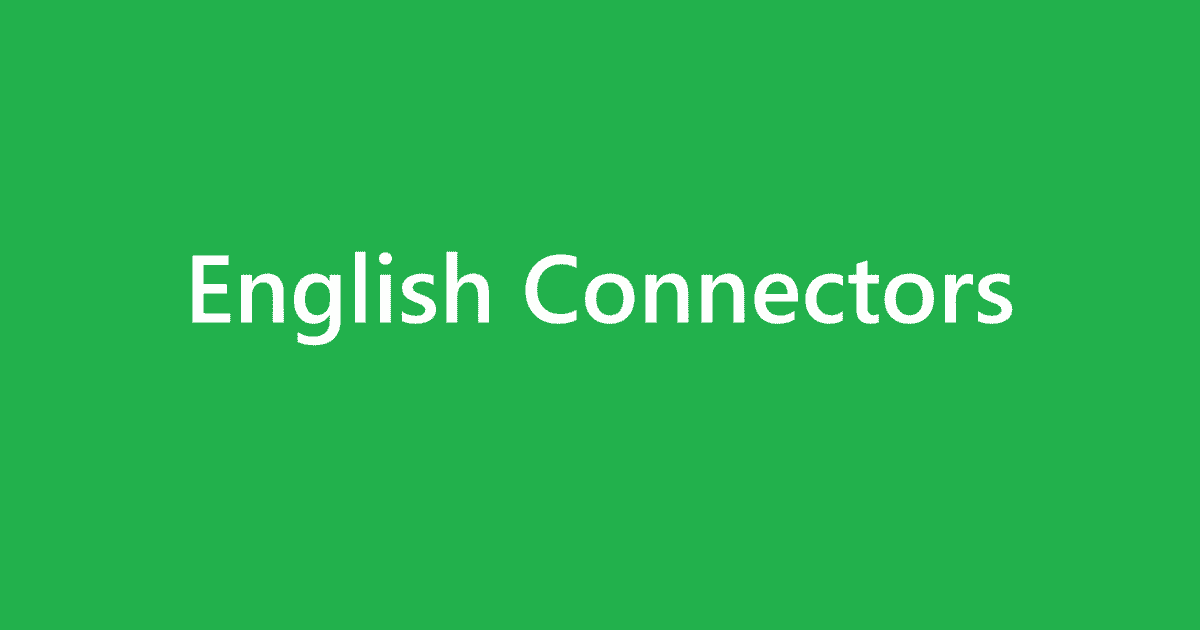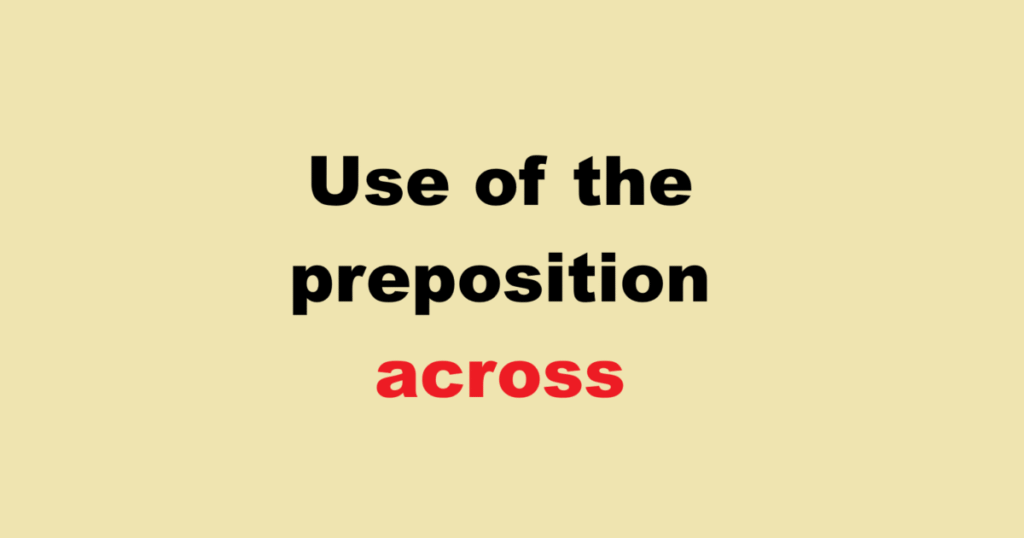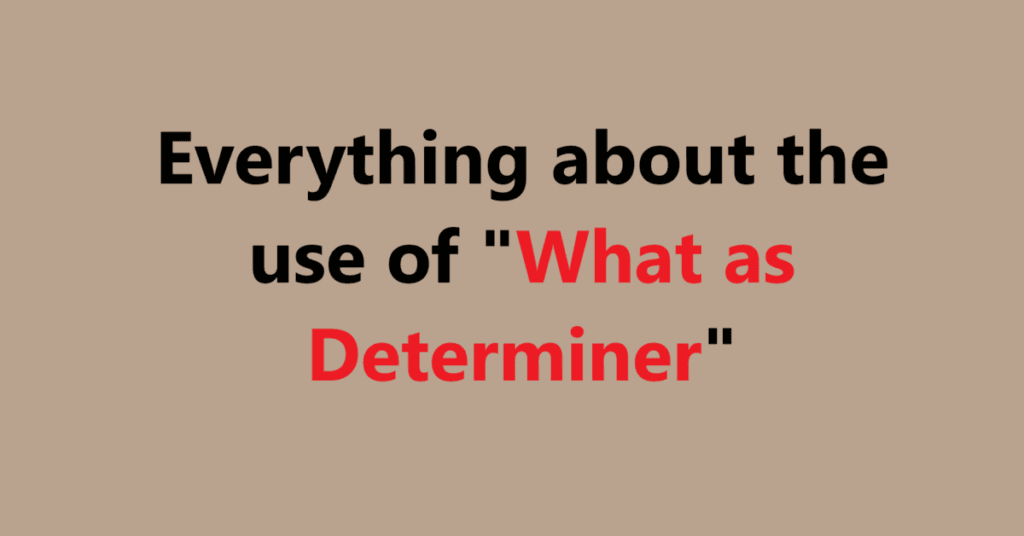What Are Connectors?
Connectors in English grammar, also known as linking words or transition words, are words or phrases that link sentences, clauses, or ideas to create smooth and coherent communication.
How to Use Connectors Effectively
Using connectors effectively enhances clarity and flow. Vary your choices to avoid repetition, place them appropriately at the start or middle of sentences, and practise by writing or speaking short paragraphs that incorporate different types.
Connectors of Addition
These connectors add information or reinforce a point.
| Connector | Definition | Example |
|---|---|---|
| and | Joins similar ideas | We studied diligently and passed the exam. |
| also | Adds another point | She plays piano; she also sings beautifully. |
| furthermore | Provides additional support | The plan is cost-effective; furthermore, it’s scalable. |
| moreover | Adds a stronger point | The house is spacious; moreover, it’s near schools. |
| besides | Introduces an extra reason | Besides homework, he volunteers at the shelter. |
| in addition | Adds extra information | In addition to English, he speaks French fluently. |
Connectors of Sequence
These indicate the order of ideas or events.
| Connector | Definition | Example |
|---|---|---|
| first | Introduces the initial point | First, gather all necessary materials. |
| then | Indicates the next step | Bake for 20 minutes, then let it cool. |
| next | Marks the following item | Next, whisk the eggs until frothy. |
| subsequently | Shows a later action | She graduated, subsequently she moved abroad. |
| finally | Presents the last point | Finally, review your answers before submitting. |
| lastly | Introduces the final element | Lastly, don’t forget to sign the document. |
Connectors of Time
These relate actions or events to specific times.
| Connector | Definition | Example |
|---|---|---|
| before | Indicates prior occurrence | Finish your homework before you come out to play. |
| during | Refers to an event’s span | During the meeting, she took detailed notes. |
| meanwhile | Describes simultaneous actions | I cooked dinner; meanwhile, he set the table. |
| later | Refers to a subsequent time | We’ll talk later when you’re free. |
| soon | Indicates a near future event | The guests will arrive soon. |
| by the time | Marks completion threshold | By the time we arrived, the show had started. |
Connectors of Contrast
These highlight differences or opposing ideas.
| Connector | Definition | Example |
|---|---|---|
| however | Introduces a contrasting point | The model is affordable; however, it lacks features. |
| although | Concedes a point | Although it rained, the match continued. |
| whereas | Compares contrasting ideas | He loves coffee, whereas she prefers tea. |
| despite | Shows opposition to a fact | Despite the delay, they reached on time. |
| on the other hand | Presents an alternative view | Cities are busy; on the other hand, villages are peaceful. |
| nevertheless | Introduces a concession | She was tired; nevertheless, she finished the project. |
Connectors of Cause & Effect
These explain reasons or results.
| Connector | Definition | Example |
|---|---|---|
| because | Gives a reason | I stayed home because I wasn’t feeling well. |
| since | Indicates cause | Since it’s sunny, let’s have lunch outdoors. |
| therefore | Shows a logical conclusion | The roads were wet; therefore, they drove slowly. |
| thus | Presents a direct outcome | He practiced daily; thus, his skills improved. |
| consequently | Indicates a consequent result | The company expanded rapidly; consequently, profits rose. |
| as a result | Marks an outcome | She missed the bus; as a result, she was late. |
Connectors of Comparison
These draw parallels or contrasts between ideas.
| Connector | Definition | Example |
|---|---|---|
| similarly | Shows likeness | The first book was a hit; similarly, the sequel sold well. |
| likewise | Indicates the same way | She volunteers daily; likewise, her friend donates regularly. |
| just as | Equates two actions or states | Just as the sun rises, hope emerges each morning. |
| in the same way | Highlights a similar process | In the same way we exercise our bodies, we must train our minds. |
| unlike | Marks a clear contrast | Unlike her brother, she prefers classical music. |
| whereas | Compares by highlighting difference | He is outgoing, whereas she is reserved. |
Connectors for Example & Illustration
These introduce instances or clarification.
| Connector | Definition | Example |
|---|---|---|
| for example | Introduces a specific case | Many fruits are rich in vitamins, for example, oranges. |
| for instance | Gives an illustrative case | Some animals hibernate; for instance, bears and hedgehogs. |
| such as | Lists representative items | She enjoys outdoor activities such as hiking and kayaking. |
| namely | Specifies something clearly | Three candidates arrived, namely, John, Priya, and Omar. |
| to illustrate | Introduces a demonstration | To illustrate my point, look at this graph. |
| in other words | Rephrases for clarity | He’s frugal; in other words, he spends very little. |
Connectors of Condition
These present hypothetical or contingent situations.
| Connector | Definition | Example |
|---|---|---|
| if | Introduces a condition | If it rains, we’ll cancel the picnic. |
| unless | Indicates a negative condition | You won’t pass unless you study. |
| provided that | Sets a formal condition | You may borrow my car, provided that you drive safely. |
| in case | Prepares for a possible event | Take an umbrella in case it showers later. |
| otherwise | Shows an alternative outcome | Hurry up, otherwise you’ll miss the train. |
| even if | Emphasizes a concession | Even if you disagree, please remain respectful. |
Connectors of Emphasis
These stress the importance of a statement.
| Connector | Definition | Example |
|---|---|---|
| indeed | Reinforces a fact | The journey was challenging, indeed exhausting. |
| in fact | Confirms truth | She didn’t just pass; in fact, she topped the class. |
| especially | Highlights particular importance | He loves all sports, especially cricket. |
| particularly | Points out a specific detail | This recipe is particularly good for beginners. |
| notably | Draws attention to a key point | Notably, the project was completed early. |
| above all | Emphasizes the foremost point | Above all, remember to stay true to yourself. |
Connectors of Opinion
These introduce personal viewpoints or beliefs.
| Connector | Definition | Example |
|---|---|---|
| in my opinion | States a personal belief | In my opinion, chocolate is the best comfort food. |
| I believe | Expresses conviction | I believe that education transforms lives. |
| I think | Shares a personal thought | I think we should start earlier tomorrow. |
| personally | Indicates individual perspective | Personally, I prefer tea over coffee. |
| as far as I’m concerned | Highlights personal stance | As far as I’m concerned, honesty is non-negotiable. |
| to me | Marks a subjective view | To me, art is the purest form of expression. |
Connectors of Conclusion & Summary
These wrap up ideas or summarize points.
| Connector | Definition | Example |
|---|---|---|
| in conclusion | Introduces the final summary | In conclusion, our survey shows clear trends. |
| to sum up | Summarizes main ideas | To sum up, teamwork and communication are vital. |
| overall | Provides a general assessment | Overall, the event was a great success. |
| in summary | Offers a concise recap | In summary, we recommend immediate action. |
| all in all | Gives a broad overview | All in all, it was a rewarding experience. |
| in brief | Presents a short synopsis | In brief, the proposal meets all objectives. |
Connectors of Persuasion
These strengthen arguments or assert certainty.
| Connector | Definition | Example |
|---|---|---|
| undoubtedly | Asserts without doubt | She is undoubtedly the team’s greatest asset. |
| certainly | Confirms absolute truth | Certainly, we can meet the deadline. |
| surely | Expresses strong assurance | Surely, this strategy will boost engagement. |
| no doubt | Indicates certainty | No doubt, this product will outperform competitors. |
| decidedly | Shows firm resolution | He was decidedly the best candidate. |
| for this reason | Justifies a persuasive argument | For this reason, we must invest now. |
12+ FAQs on English Connectors
What is an English connector?
Connectors, also called linking or transition words, are terms and phrases that join ideas, sentences, or paragraphs. They guide readers through your reasoning by showing relationships like addition, cause and effect, contrast, or sequence. For example, “however,” “therefore,” and “in addition” are common connectors that make writing flow smoothly.
Why are connectors important in writing and speaking?
Connectors enhance clarity and coherence by mapping out how one idea relates to another. They prevent your text from feeling choppy or disjointed, help emphasize key points, and signal shifts in argument or time. In speech, they also give listeners signposts to follow your train of thought.
How do connectors differ from conjunctions?
Conjunctions (and, but, or) link words, phrases, or clauses within a single sentence, while connectors can join whole sentences or paragraphs. Connectors often function at the start of a sentence or clause to introduce a transition: for example, “On the other hand” or “As a result.”
What are the main types of connectors?
The most common categories are:
- Addition (and, moreover)
- Contrast (however, although)
- Cause & Effect (because, therefore)
- Sequence & Time (first, subsequently)
- Comparison (similarly, unlike)
- Example & Illustration (for example, namely)
- Condition (if, unless)
- Emphasis (indeed, especially)
- Conclusion & Summary (in conclusion, to sum up)
Can I start a sentence with a connector?
Yes. Beginning a sentence with a connector like “Furthermore,” “However,” or “Therefore,” is perfectly acceptable in both formal and informal writing. Just follow it with a comma and ensure it links clearly to the previous idea.
Do connectors always require a comma?
Many connectors used at the start of a sentence are followed by a comma (e.g., “Consequently, sales increased.”). In the middle of a sentence, punctuation depends on the connector and its function: “because” usually doesn’t take a comma when it introduces an essential clause, while “however” often does when signaling contrast.
How do I choose the right connector?
Identify the relationship you want to show: addition, contrast, sequence, cause, etc. Then select a connector that precisely matches that role. For formal writing, opt for words like “moreover” or “consequently”; in casual contexts, “also” or “so” may feel more natural.
Can I use more than one connector in the same sentence?
Yes, but use them sparingly to avoid overloading your sentence. For example: “She studied hard; therefore, she passed the exam, and she celebrated her success.” Here, two connectors (“therefore,” “and”) work because each marks a clear shift or addition.
How do I avoid repetitive connectors?
Keep a list of synonyms categorized by function and rotate through them. For instance, instead of always using “however,” you might use “nevertheless,” “on the other hand,” or “in contrast.” Reading widely and noting transitions in professional writing can also expand your toolkit.
Are connectors necessary in informal speech?
While casual conversation can flow without overt connectors, using a few enhances clarity, especially in storytelling or giving instructions. Words like “so,” “then,” and “but” are very common in everyday dialogue to link thoughts and maintain listener engagement.
How can I practice using connectors effectively?
Write short paragraphs on familiar topics and deliberately include at least five different connector types. Then read aloud to check flow. You can also take a piece of your own writing and revise it, adding or swapping connectors to strengthen coherence.
What’s the difference between similar connectors like ‘however’ and ‘nevertheless’?
Both signal contrast, but “however” can introduce a sharp turn, while “nevertheless” often concedes a point before presenting a counter. For example: “The weather was cold; however, we went swimming.” versus “The weather was cold; nevertheless, we enjoyed the pool.”
How do connectors interact with paragraph structure?
Use a strong topic sentence, then insert connectors to link supporting details. At the end, a summary connector like “in conclusion” or “overall” signals closure. This pattern guides readers smoothly through each paragraph’s internal logic.
Can connectors improve my exam or essay scores?
Absolutely. Examiners look for clear organization and logical flow. Appropriate, varied connectors demonstrate mastery of cohesion and academic style, which can boost readability and mark allocations.
Beyond the FAQs: Next Steps
- Try a Connector Swap exercise: pick a paragraph you’ve written and replace every connector with a synonym to see how nuance shifts.
- Create flashcards for each connector type and test yourself on their definitions, example sentences, and appropriate contexts.
- Explore advanced transitions like “notwithstanding,” “conversely,” and “subsequently” to elevate your formal writing.
- Check out reputable online writing centers or style guides for deeper drills on punctuation rules surrounding connectors.
- Record yourself giving a short speech and listen for places you can insert connectors to make your delivery more polished.
Read Also,


